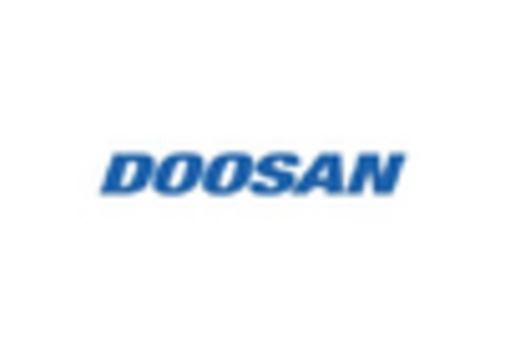-
EXECUTIVE SUMMARY
-
MARKET ATTRACTIVENESS ANALYSIS
- GLOBAL MULTI-TASKING MACHINE TOOLS MARKET, BY PRODUCT TYPE
- GLOBAL MULTI-TASKING MACHINE TOOLS MARKET, BY APPLICATION
- GLOBAL MULTI-TASKING MACHINE TOOLS MARKET, BY REGION
-
MARKET INTRODUCTION
-
SCOPE OF THE STUDY
-
RESEARCH OBJECTIVE
-
MARKET STRUCTURE
-
KEY BUYING CRITERIA
-
RESEARCH METHODOLOGY
-
RESEARCH PROCESS
-
PRIMARY RESEARCH
-
SECONDARY RESEARCH
-
MARKET SIZE ESTIMATION
-
FORECAST MODEL
-
LIST OF ASSUMPTIONS & LIMITATIONS
-
MARKET INSIGHTS
-
MARKET DYNAMICS
-
INTRODUCTION
-
DRIVERS
- DEVELOPING AEROSPACE & DEFENSE INFRASTRUCTURE IN EMERGING MARKET
- DRIVERS IMPACT ANALYSIS
-
RESTRAINT
- HIGH INITIAL INVESTMENT
- RESTRAINTS IMPACT ANALYSIS
-
OPPORTUNITIES
- GROWTH IN THE NUMBER OF INDUSTRIAL ACTIVITIES
-
CHALLENGE
- SURGING PRICES OF STEEL
-
MARKET FACTOR ANALYSIS
-
SUPPLY CHAIN ANALYSIS
- DESIGN AND DEVELOPMENT
- RAW MATERIAL/COMPONENT SUPPLY
- MULTI-TASKING MACHINE TOOLS MANUFACTURE/ASSEMBLY
- MULTI-TASKING MACHINE TOOLS DISTRIBUTION
- END USE
-
PORTER''S FIVE FORCES MODEL
- THREAT OF NEW ENTRANTS
- BARGAINING POWER OF SUPPLIERS
- THREAT OF SUBSTITUTES
- BARGAINING POWER OF BUYERS
- INTENSITY OF RIVALRY
-
IMPACT OF COVID-19 PANDEMIC ON THE GLOBAL MULTI-TASKING MACHINE TOOLS MARKET
- IMPACT ON PRODUCTION
- IMPACT ON SUPPLY CHAIN
- IMPACT ON RAW MATERIALS
- CASH FLOW CONSTRAINTS
- IMPACT ON PRICING
-
GLOBAL MULTI-TASKING MACHINE TOOLS MARKET, BY PRODUCT TYPE
-
OVERVIEW
- GLOBAL MULTI-TASKING MACHINE TOOLS MARKET ESTIMATES & FORECAST, BY PRODUCT TYPE, 2019-2030
-
CNC MACHINE
- CNC MACHINE: MARKET ESTIMATES & FORECAST, BY REGION, 2019-2030
-
TURRET MACHINE
- TURRET MACHINE: MARKET ESTIMATES & FORECAST, BY REGION, 2019-2030
-
MILLING
- MILLING: MARKET ESTIMATES & FORECAST, BY REGION, 2019-2030
-
FRICTION STIR WELDING (FSW) MACHINES
- FRICTION STIR WELDING (FSW) MACHINES: MARKET ESTIMATES & FORECAST, BY REGION, 2019-2030
-
OTHERS
- OTHERS: MARKET ESTIMATES & FORECAST, BY REGION, 2019-2030
-
GLOBAL MULTI-TASKING MACHINE TOOLS MARKET, BY APPLICATION
-
OVERVIEW
- GLOBAL MULTI-TASKING MACHINE TOOLS MARKET ESTIMATES & FORECAST, BY APPLICATION, 2019-2030
-
AUTOMOTIVE
- AUTOMOTIVE: MARKET ESTIMATES & FORECAST, BY REGION, 2019-2030
-
CONSTRUCTION
- CONSTRUCTION: MARKET ESTIMATES & FORECAST, BY REGION, 2019-2030
-
AEROSPACE
- AEROSPACE: MARKET ESTIMATES & FORECAST, BY REGION, 2019-2030
-
OTHERS
- OTHERS: MARKET ESTIMATES & FORECAST, BY REGION, 2019-2030
-
GLOBAL MULTI-TASKING MACHINE TOOLS MARKET, BY REGION
-
OVERVIEW
- GLOBAL MULTI-TASKING MACHINE TOOLS MARKET ESTIMATES & FORECAST, BY REGION, 2019-2030
-
NORTH AMERICA
- NORTH AMERICA MULTI-TASKING MACHINE TOOLS MARKET ESTIMATES & FORECAST, BY COUNTRY, 2019-2030
- US
- CANADA
- MEXICO
-
EUROPE
- EUROPE MULTI-TASKING MACHINE TOOLS MARKET ESTIMATES & FORECAST, BY COUNTRY, 2019-2030
- GERMANY
- UK
- FRANCE
- SPAIN
- ITALY
- REST OF EUROPE
-
ASIA-PACIFIC
- ASIA-PACIFIC MULTI-TASKING MACHINE TOOLS MARKET ESTIMATES & FORECAST, BY COUNTRY, 2019-2030
- CHINA
- INDIA
- JAPAN
- AUSTRALIA & NEW ZEALAND
- REST OF ASIA-PACIFIC
-
REST OF THE WORLD
- REST OF THE WORLD MULTI-TASKING MACHINE TOOLS MARKET ESTIMATES & FORECAST, BY REGION, 2019-2030
- SOUTH AMERICA
- MIDDLE EAST
- AFRICA
-
COMPETITIVE LANDSCAPE
-
INTRODUCTION
- MARKET STRATEGY ANALYSIS
-
COMPETITIVE BENCHMARKING
-
KEY DEVELOPMENTS & GROWTH STRATEGIES
- PRODUCT LAUNCH
- EXPANSIONS
-
COMPANY MARKET SHARE ANALYSIS
-
COMPANY PROFILES
-
YAMAZAKI MAZAK CORPORATION
- COMPANY OVERVIEW
- FINANCIAL OVERVIEW
- PRODUCTS OFFERED
- KEY DEVELOPMENTS
- SWOT ANALYSIS
- KEY STRATEGIES
-
NAKAMURA-TOME CO., LTD
- COMPANY OVERVIEW
- FINANCIAL OVERVIEW
- PRODUCTS OFFERED
- KEY DEVELOPMENTS
- SWOT ANALYSIS
- KEY STRATEGIES
-
TONGTAI MACHINE & TOOL CO., LTD
- COMPANY OVERVIEW
- FINANCIAL OVERVIEW
- PRODUCTS OFFERED
- KEY DEVELOPMENTS
- SWOT ANALYSIS
- KEY STRATEGIES
-
OKUMA CORPORATION
- COMPANY OVERVIEW
- FINANCIAL OVERVIEW
- PRODUCTS OFFERED
- KEY DEVELOPMENTS
- SWOT ANALYSIS
- KEY STRATEGIES
-
TSUGAMI CORPORATION
- COMPANY OVERVIEW
- FINANCIAL OVERVIEW
- PRODUCTS OFFERED
- KEY DEVELOPMENTS
- SWOT ANALYSIS
- KEY STRATEGIES
-
DOOSAN CORPORATION
- COMPANY OVERVIEW
- FINANCIAL OVERVIEW
- PRODUCTS OFFERED
- KEY DEVELOPMENTS
- SWOT ANALYSIS
- KEY STRATEGIES
-
TREVISAN MACHINE TOOL
- COMPANY OVERVIEW
- FINANCIAL OVERVIEW
- PRODUCTS OFFERED
- KEY DEVELOPMENTS
- KEY STRATEGIES
-
ACCUWAY MACHINERY CORPORATION
- COMPANY OVERVIEW
- FINANCIAL OVERVIEW
- PRODUCTS OFFERED
- KEY DEVELOPMENTS
- KEY STRATEGIES
-
BRETON S.P.A.
- COMPANY OVERVIEW
- FINANCIAL OVERVIEW
- PRODUCTS OFFERED
- KEY DEVELOPMENTS
- KEY STRATEGIES
-
DMG MORI
- COMPANY OVERVIEW
- FINANCIAL OVERVIEW
- PRODUCTS OFFERED
- KEY DEVELOPMENTS
- KEY STRATEGIES
-
HWACHEON MACHINERY CO., LTD
- FINANCIAL OVERVIEW
- PRODUCTS OFFERED
- KEY DEVELOPMENTS
- KEY STRATEGIES
-
APPENDIX
-
REFERENCES
-
RELATED REPORTS
-
-
LIST OF TABLES
-
PRIMARY INTERVIEWS
-
LIST OF ASSUMPTIONS & LIMITATIONS
-
AUTOMOTIVE PRODUCTION BY REGION 2017-2020 (MILLION UNITS)
-
GLOBAL MULTI-TASKING MACHINE TOOLS MARKET ESTIMATES & FORECAST, BY PRODUCT TYPE, 2019-2030
-
(USD MILLION)
-
CNC MACHINE: MARKET ESTIMATES & FORECAST, BY REGION, 2019-2030 (USD MILLION)
-
TURRET MACHINE: MARKET ESTIMATES & FORECAST, BY REGION, 2019-2030 (USD MILLION)
-
MILLING: MARKET ESTIMATES & FORECAST, BY REGION, 2019-2030 (USD MILLION)
-
FRICTION STIR WELDING (FSW) MACHINES: MARKET ESTIMATES & FORECAST, BY REGION, 2019-2030 (USD MILLION)
-
OTHERS: MARKET ESTIMATES & FORECAST, BY REGION, 2019-2030 (USD MILLION)
-
GLOBAL MULTI-TASKING MACHINE TOOLS MARKET ESTIMATES & FORECAST, BY APPLICATION, 2019-2030 (USD MILLION)
-
AUTOMOTIVE: MARKET ESTIMATES & FORECAST, BY REGION, 2019-2030 (USD MILLION)
-
CONSTRUCTION: MARKET ESTIMATES & FORECAST, BY REGION, 2019-2030 (USD MILLION)
-
AEROSPACE: MARKET ESTIMATES & FORECAST, BY REGION, 2019-2030 (USD MILLION)
-
OTHERS: MARKET ESTIMATES & FORECAST, BY REGION, 2019-2030 (USD MILLION)
-
GLOBAL MULTI-TASKING MACHINE TOOLS MARKET ESTIMATES & FORECAST, BY REGION, 2019-2030 (USD MILLION)
-
NORTH AMERICA: MARKET ESTIMATES & FORECAST, BY COUNTRY, 2019-2030 (USD MILLION)
-
NORTH AMERICA: MARKET ESTIMATES, BY PRODUCT TYPE, 2019-2030 (USD MILLION)
-
NORTH AMERICA: MARKET ESTIMATES, BY APPLICATION, 2019-2030 (USD MILLION)
-
US: MARKET ESTIMATES, BY PRODUCT TYPE, 2019-2030 (USD MILLION)
-
US: MARKET ESTIMATES, BY APPLICATION, 2019-2030 (USD MILLION)
-
CANADA: MARKET ESTIMATES, BY PRODUCT TYPE, 2019-2030 (USD MILLION)
-
CANADA: MARKET ESTIMATES, BY APPLICATION, 2019-2030 (USD MILLION)
-
MEXICO: MARKET ESTIMATES, BY PRODUCT TYPE, 2019-2030 (USD MILLION)
-
MEXICO: MARKET ESTIMATES, BY APPLICATION, 2019-2030 (USD MILLION)
-
EUROPE: MARKET ESTIMATES & FORECAST, BY COUNTRY, 2019-2030 (USD MILLION)
-
EUROPE: MARKET ESTIMATES, BY PRODUCT TYPE, 2019-2030 (USD MILLION)
-
EUROPE: MARKET ESTIMATES, BY APPLICATION, 2019-2030 (USD MILLION)
-
GERMANY: MARKET ESTIMATES, BY PRODUCT TYPE, 2019-2030 (USD MILLION)
-
GERMANY: MARKET ESTIMATES, BY APPLICATION, 2019-2030 (USD MILLION)
-
UK: MARKET ESTIMATES, BY PRODUCT TYPE, 2019-2030 (USD MILLION)
-
UK: MARKET ESTIMATES, BY APPLICATION, 2019-2030 (USD MILLION)
-
FRANCE: MARKET ESTIMATES, BY PRODUCT TYPE, 2019-2030 (USD MILLION)
-
FRANCE: MARKET ESTIMATES, BY APPLICATION, 2019-2030 (USD MILLION)
-
SPAIN: MARKET ESTIMATES, BY PRODUCT TYPE, 2019-2030 (USD MILLION)
-
SPAIN: MARKET ESTIMATES, BY APPLICATION, 2019-2030 (USD MILLION)
-
ITALY: MARKET ESTIMATES, BY PRODUCT TYPE, 2019-2030 (USD MILLION)
-
ITALY: MARKET ESTIMATES, BY APPLICATION, 2019-2030 (USD MILLION)
-
REST OF EUROPE: MARKET ESTIMATES, BY PRODUCT TYPE, 2019-2030 (USD MILLION)
-
REST OF EUROPE: MARKET ESTIMATES, BY APPLICATION, 2019-2030 (USD MILLION)
-
ASIA-PACIFIC: MARKET ESTIMATES & FORECAST, BY COUNTRY, 2019-2030 (USD MILLION)
-
ASIA-PACIFIC: MARKET ESTIMATES, BY PRODUCT TYPE, 2019-2030 (USD MILLION)
-
ASIA-PACIFIC: MARKET ESTIMATES, BY APPLICATION, 2019-2030 (USD MILLION)
-
CHINA: MARKET ESTIMATES, BY PRODUCT TYPE, 2019-2030 (USD MILLION)
-
CHINA: MARKET ESTIMATES, BY APPLICATION, 2019-2030 (USD MILLION)
-
INDIA: MARKET ESTIMATES, BY PRODUCT TYPE, 2019-2030 (USD MILLION)
-
INDIA: MARKET ESTIMATES, BY APPLICATION, 2019-2030 (USD MILLION)
-
JAPAN: MARKET ESTIMATES, BY PRODUCT TYPE, 2019-2030 (USD MILLION)
-
JAPAN: MARKET ESTIMATES, BY APPLICATION, 2019-2030 (USD MILLION)
-
AUSTRALIA & NEW ZEALAND: MARKET ESTIMATES, BY PRODUCT TYPE, 2019-2030 (USD MILLION)
-
AUSTRALIA & NEW ZEALAND: MARKET ESTIMATES, BY APPLICATION, 2019-2030 (USD MILLION)
-
REST OF ASIA-PACIFIC: MARKET ESTIMATES, BY PRODUCT TYPE, 2019-2030 (USD MILLION)
-
REST OF ASIA-PACIFIC: MARKET ESTIMATES, BY APPLICATION, 2019-2030 (USD MILLION)
-
REST OF THE WORLD: MARKET ESTIMATES & FORECAST, BY REGION, 2019-2030 (USD MILLION)
-
REST OF THE WORLD: MARKET ESTIMATES, BY PRODUCT TYPE, 2019-2030 (USD MILLION)
-
REST OF THE WORLD: MARKET ESTIMATES, BY APPLICATION, 2019-2030 (USD MILLION)
-
SOUTH AMERICA: MARKET ESTIMATES, BY PRODUCT TYPE, 2019-2030 (USD MILLION)
-
SOUTH AMERICA: MARKET ESTIMATES, BY APPLICATION, 2019-2030 (USD MILLION)
-
MIDDLE EAST: MARKET ESTIMATES, BY PRODUCT TYPE, 2019-2030 (USD MILLION)
-
MIDDLE EAST: MARKET ESTIMATES, BY APPLICATION, 2019-2030 (USD MILLION)
-
AFRICA: MARKET ESTIMATES, BY PRODUCT TYPE, 2019-2030 (USD MILLION)
-
AFRICA: MARKET ESTIMATES, BY APPLICATION, 2019-2030 (USD MILLION)
-
PRODUCT LAUNCH
-
EXPANSIONS
-
YAMAZAKI MAZAK CORPORATION: PRODUCTS OFFERED
-
YAMAZAKI MAZAK CORPORATION: KEY DEVELOPMENTS
-
NAKAMURA-TOME CO., LTD: PRODUCTS OFFERED
-
NAKAMURA-TOME CO., LTD: KEY DEVELOPMENTS
-
TONGTAI MACHINE & TOOL CO., LTD: PRODUCTS OFFERED
-
OKUMA CORPORATION: PRODUCTS OFFERED
-
TSUGAMI CORPORATION: PRODUCTS OFFERED
-
DOOSAN CORPORATION: PRODUCTS OFFERED
-
DOOSAN CORPORATION: KEY DEVELOPMENTS
-
TREVISAN MACHINE TOOL: PRODUCTS OFFERED
-
ACCUWAY MACHINERY CORPORATION: PRODUCTS OFFERED
-
BRETON S.P.A.: PRODUCTS OFFERED
-
DMG MORI: PRODUCTS OFFERED
-
HWACHEON MACHINERY CO. LTD: PRODUCTS OFFERED
-
-
LIST OF FIGURES
-
MARKET SYNOPSIS
-
MARKET ATTRACTIVENESS ANALYSIS: GLOBAL MULTI-TASKING MACHINE TOOLS MARKET, 2021
-
GLOBAL MULTI-TASKING MACHINE TOOLS MARKET ANALYSIS, BY PRODUCT TYPE, 2021
-
GLOBAL MULTI-TASKING MACHINE TOOLS MARKET ANALYSIS, BY APPLICATION, 2021
-
GLOBAL MULTI-TASKING MACHINE TOOLS MARKET ANALYSIS, BY REGION, 2021
-
GLOBAL MULTI-TASKING MACHINE TOOLS MARKET: STRUCTURE
-
KEY BUYING CRITERIA FOR MULTI-TASKING MACHINE TOOLS MARKET
-
RESEARCH PROCESS
-
TOP-DOWN AND BOTTOM-UP APPROACHES
-
NORTH AMERICA: MULTI-TASKING MACHINE TOOLS MARKET SIZE, BY COUNTRY (2021 VS. 2030)
-
EUROPE: MULTI-TASKING MACHINE TOOLS MARKET SIZE, BY COUNTRY (2021 VS. 2030)
-
ASIA-PACIFIC: MULTI-TASKING MACHINE TOOLS MARKET SIZE, BY COUNTRY (2021 VS. 2030)
-
REST OF THE WORLD: MULTI-TASKING MACHINE TOOLS MARKET SIZE, BY REGION (2021 VS. 2030)
-
MARKET DYNAMICS OF THE GLOBAL MULTI-TASKING MACHINE TOOLS MARKET
-
DRIVERS IMPACT ANALYSIS: GLOBAL MULTI-TASKING MACHINE TOOLS MARKET
-
RESTRAINTS IMPACT ANALYSIS: GLOBAL MULTI-TASKING MACHINE TOOLS MARKET
-
SUPPLY CHAIN ANALYSIS: GLOBAL MULTI-TASKING MACHINE TOOLS MARKET
-
PORTER''S FIVE FORCES ANALYSIS OF GLOBAL MULTI-TASKING MACHINE TOOLS MARKET
-
GLOBAL MULTI-TASKING MACHINE TOOLS MARKET, BY PRODUCT TYPE, 2021 (% SHARE)
-
GLOBAL MULTI-TASKING MACHINE TOOLS MARKET, BY PRODUCT TYPE, 2019-2030 (USD MILLION)
-
GLOBAL MULTI-TASKING MACHINE TOOLS MARKET, BY APPLICATION, 2021 (% SHARE)
-
GLOBAL MULTI-TASKING MACHINE TOOLS MARKET, BY APPLICATION, 2019-2030 (USD MILLION)
-
GLOBAL MULTI-TASKING MACHINE TOOLS MARKET, BY REGION, 2019-2030 (USD MILLION)
-
GLOBAL MULTI-TASKING MACHINE TOOLS MARKET, BY REGION, 2021 (% SHARE)
-
NORTH AMERICA: MULTI-TASKING MACHINE TOOLS MARKET SHARE, BY COUNTRY, 2021 (% SHARE)
-
EUROPE: MULTI-TASKING MACHINE TOOLS MARKET SHARE, BY COUNTRY, 2021 (% SHARE)
-
ASIA-PACIFIC: MULTI-TASKING MACHINE TOOLS MARKET SHARE, BY COUNTRY, 2021 (% SHARE)
-
REST OF THE WORLD: MULTI-TASKING MACHINE TOOLS MARKET SHARE, BY REGION, 2021 (% SHARE)
-
COMPETITIVE BENCHMARKING
-
COMPANY MARKET SHARE ANALYSIS, 2021
-
YAMAZAKI MAZAK CORPORATION: SWOT ANALYSIS
-
NAKAMURA-TOME CO., LTD: SWOT ANALYSIS
-
TONGTAI MACHINE & TOOL CO., LTD: FINANCIAL OVERVIEW SNAPSHOT
-
TONGTAI MACHINE & TOOL CO., LTD: SWOT ANALYSIS
-
OKUMA CORPORATION: FINANCIAL OVERVIEW SNAPSHOT
-
OKUMA CORPORATION: SWOT ANALYSIS
-
TSUGAMI CORPORATION: FINANCIAL OVERVIEW SNAPSHOT
-
TSUGAMI CORPORATION: SWOT ANALYSIS
-
DOOSAN CORPORATION: FINANCIAL OVERVIEW SNAPSHOT
-
DOOSAN CORPORATION: SWOT ANALYSIS
-
DMG MORI: FINANCIAL OVERVIEW SNAPSHOT














Leave a Comment